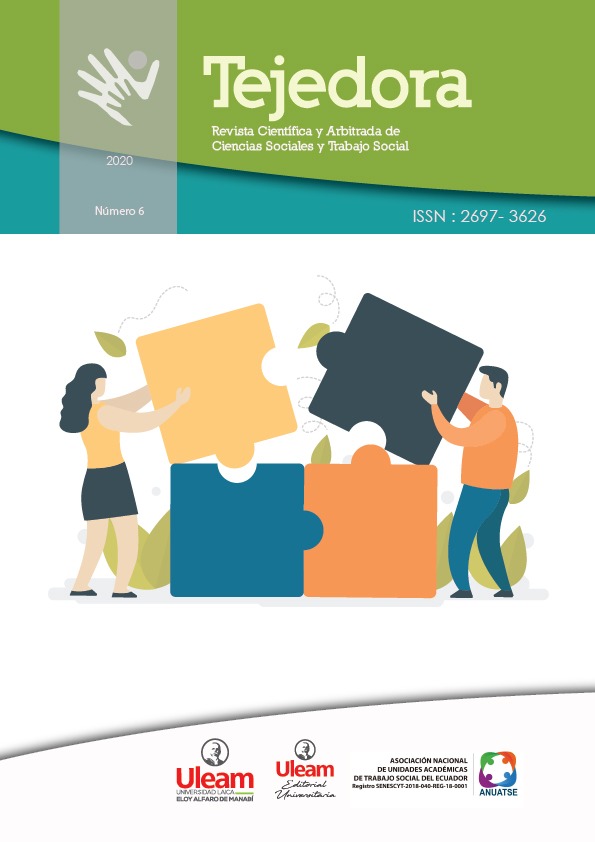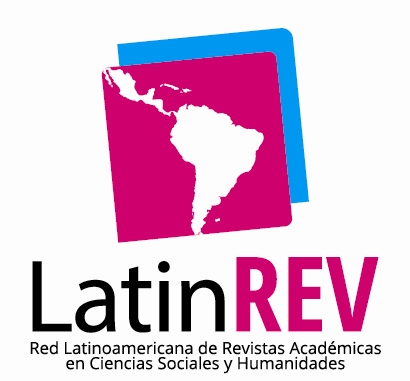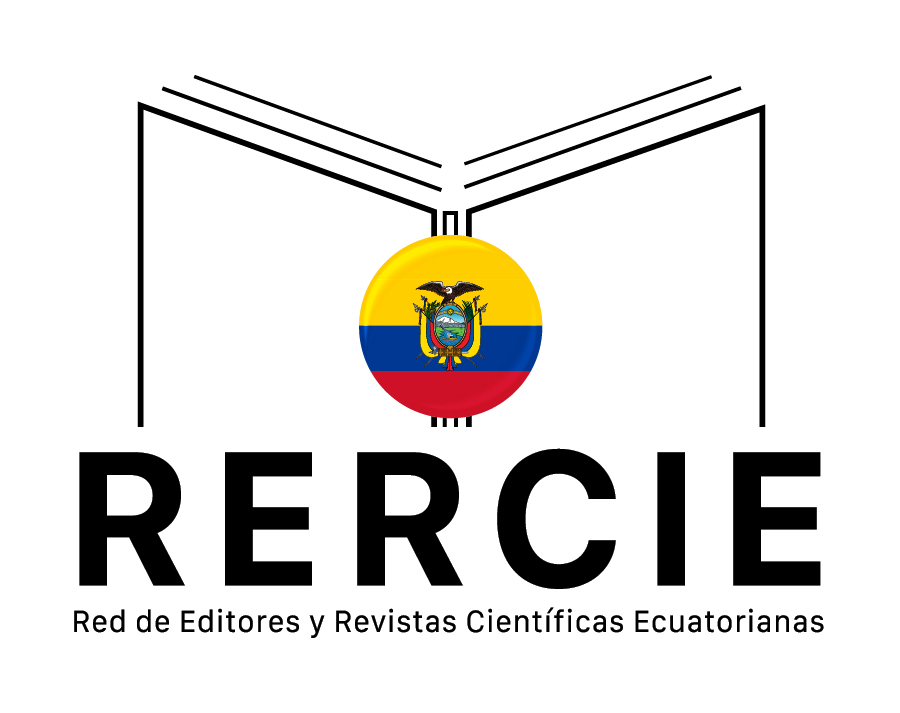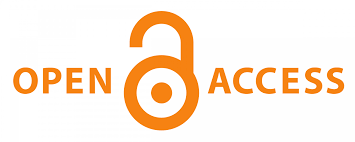SOCIAL INTERVENTION IN TIMES OF PANDEMIC, COVID-19 IN ZONE 7
DOI:
https://doi.org/10.56124/tj.v6i11.0071Keywords:
intervention, pandemic, social workAbstract
The objective of this article is to determine the problems encountered during the health emergency situation by COVID-19 that occurred during confinement in order to take preventive measures that protect the comprehensive health of individuals through the Intervention of the Social Worker. in times of the Covid-19 Pandemic in zone 7; taking as reference the research that was carried out on the students of the National University of Loja, applied by the team of teachers responsible for the project of the INFORMATION AND HELP NETWORK BEFORE THE EMERGENCY OF COVID - 19, and determine if they are informed about prevention measures to act against possible infections and their action against the health emergency. An investigation was carried out in which the elaboration and application of a socio-contextual survey was used as a tool in which different perceptions were identified among students regarding the handling of the present situation, the mishandling of the spread of the virus; the weak management of how to take preventive measures and identification of resources and capacities; These elements were the basis for intervening from the professional point of view of the social worker with technical tools for their application, such as the development of biosafety protocols for students to avoid massive contagion, with this it was intended to contribute to raising awareness with measures that respond to situations of high risk or that generate high levels of stress. In this process, the socialization of the biosafety protocols to the university community was carried out through the Social Work career of the National University of Loja and the student welfare department. In this article we will know the main problems given in the different areas of the students as well as the intervention measures for the solution of the problems, regarding the Covid19 pandemic.
Keywords: intervention, pandemic, social work.
Downloads
References
Altamirano, A. S. C. (2021). Incidencia de la violencia contra la mujer y miembros del núcleo familiar en tiempos de pandemia. Revista Jurídica Crítica y Derecho, 2(3), 11-29.
Akel, M., Berro, J., Rahme, C., Haddad, C., Obeid, Anuatse (2020). Estudio socio contextual Covid-19 2020, PROYECTO “RED DE INFORMACIÓN Y AYUDAS ANTE LA EMERGENCIA DEL COVID - 19”. Arabia Saudita [Internet]. Ginebra: OMS; Disponible en: https://www.who.int/csr/don/24-february-2020-mers-saudi-arabia/es/.
Mancini, M. (2020). Crisis y alternativas en torno al género en la pandemia mundial.
Arias-Medina, P., & Sacaquirin Rivadeneira, C. (2021). Teletrabajo, trabajo no remunerado y violencia de género en el Ecuador durante la pandemia por COVID-19. Maskana, 12(2), 11–18. https://doi.org/10.18537/mskn.12.02.02
Asociación Internacional de Universidades. COVID-19: Retos y respuestas de la educación superior. Asociación Internacional de Universidades; 2020 [acceso 22/12/2020]. Disponible en:https://www.iau-aiu.net/covid-19-higher-education-challenges-and-responses#survey%20reports
Cabezas, C. (2020). Pandemia de la COVID-19: Tormentas y retos. Revista Peruana de Medicina Experimental y Salud Pública, 37(4), 603-604.
Carballeda, A. (2020). Apuntes sobre la intervención del Trabajo Social en tiempos de Pandemia de Covid-19.
CEPAL. (2010). Salud y economía: una convergencia necesaria para enfrentar el COVID-19 y retomar la senda hacia el desarrollo sostenible en América Latina y el Caribe. [Internet]. CEPAL, OPS. Disponible en: https://repositorio.cepal.org/bitstream/handle/11362/45840/S2000462_es.pdf?sequence=4&isAllowed=y.
Constitución Política del Ecuador. (2008). Art. No. 81. Montecristi, Ecuador, 20 de octubre del 2008.
Correa-Quezada, R., Vélez, D. G., García, J. Á., & Castillo, M. D. C. T. (2020). La COVID-19 y su impacto en la pobreza de Ecuador: método de escenarios. Contaduría y administración, 65(5), 5.
De Aparicio, C. X. P. (2020). Salud laboral frente a la pandemia del COVID-19 en Ecuador.
Bustamante, R. Y. S., Ruiz, G. R. S., Suarez, C. A. R., & Santiana, Z. L. T. (2020). El desempleo en el ecuador: causas y consecuencias. Polo del Conocimiento: Revista científico-profesional, 5(10), 774-797.
Federico Coy (1990). Violencia hacia la mujer en Guatemala, primer Seminario centroamericano sobre violencia contra la mujer como un problema de salud pública.
Guanche Garcell H, Suárez Cabrera A, Márquez Furet A, González Valdés A, González Álvarez L. (2020). Componente crítico en las estrategias de atención médica, prevención y control de la COVID-19. Educación Médica Superior. Disponible en: http://www.ems.sld.cu/index.php/ems/article/view/2385
Ibáñez, D. B. (2017). La violencia de género en Ecuador: un estudio sobre los Universitarios. Revista Estudios Feministas, 25, 1313-1327.U S., & Hallit, S. (2021), 1-26. doi:10.1177/0886260521997953
Jaffe, Peter y otros (1986), "Similarities in behavioural and social maladjustment among child victims and witnesses to family violence", American Journal of Orthopsychiatry, Nº 50.
López-Hernández, E., & Rubio-Amores, D. (2020). Reflexiones sobre la violencia intrafamiliar y violencia de género durante emergencia por COVID-19. Ciencia América, 9(2), 312-321.
Londoño Bernal, N. (2020). Expresiones de la violencia basada en género, en el marco del confinamiento por COVID-19. Nova, 18(SPE35), 107-113.
Maguiña Vargas, C., Gastelo Acosta, R., & Tequen Bernilla, A. (2020). El nuevo Coronavirus y la pandemia del Covid-19. Revista Médica Herediana, 31(2), 125-131.
Medina, D. C. M., Guayacundo, M. O. B., Encalada, L. M. A., & Estupiñán, A. M. M. (2020). Violencia intrafamiliar en el marco de la emergencia sanitaria por el COVID-19. CienciAmérica: Revista de divulgación científica de la Universidad Tecnológica Indoamérica, 9(2), 261-267.
Ministerio de Salud Pública. (2020). Boletín Epidemiológico Covid-19, coronavirus. Ecuador: MSP. Disponible en: Disponible en: https://www.salud.gob.ec/boletines-epidemiologicos-coronavirus-por-semanas/.
Organización de las Naciones Unidas (2020). Economic Commission for Latin America and the Caribbean (ECLAC). Measuring the impact of COVID-19 with a view to reactivation. New York: United Nations. Disponible en: https://digitallibrary.un.org/record/3858752
Organización de las Naciones Unidas. (2020). Análisis inicial de las NACIONES UNIDAS COVID-19 En Argentina: impacto socioeconómico y ambiental. [s.l.]: ONU. MediSur, 18(3), 507-511.
Organización Mundial de la Salud. (2020). Coronavirus. Ginebra: OMS. Disponible en: https://www.who.int/es/health-topics/coronavirus.
Organización Mundial de la Salud. Coronavirus causante del síndrome respiratorio de Oriente Medio (MERS-CoV)
ONU. (2020). Ante el aumento de la violencia doméstica por el coronavirus, Guterres llama a la paz en los hogares. Noticias ONU. Disponible en: https://news.un.org/es/story/2020/04/1472392
Peña-Contreras, E.-K., Calderón-López, M.- del-C., Krause. (2020). Cambio institucional, crisis y pandemias. MISES: Interdisciplinary Journal of Philosophy, Law and Economics. ISSN: 2318-0811. Disponible en: https://www.redalyc.org/articulo.oa?id=586363381022
Perman, G., Puga, C., Ricci, I., & Terrasa, S. A. (2020). Daños colaterales de la pandemia por COVID-19. Consecuencias inevitables. Rev. Hosp. Ital. B. Aires (2004), 185-190.
Ruiz-Pérez, I., & Pastor-Moreno, G. (2022). Medidas de contención de la violencia de género durante la pandemia de COVID-19. Gaceta sanitaria, 35, 389-394.
Viveros M., & Arango L, G. (2014). El género: una categoría útil para las ciencias sociales [Internet]. Bogotá D.C.: Universidad Nacional de Colombia, Facultad de Ciencias, Escuela de estudios de Género, Grupo Interdisciplinario de Estudios de Género (GIEG). Disponible en: http://www.digitaliapublishing.com/a/62149/
Published
How to Cite
Issue
Section
License
Copyright (c) 2023 Revista Científica y Arbitrada de Ciencias Sociales y Trabajo Social: Tejedora. ISSN: 2697-3626

This work is licensed under a Creative Commons Attribution-NonCommercial-ShareAlike 4.0 International License.






















